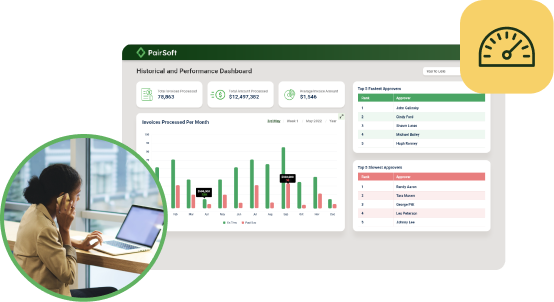
Wadih Pazos
Wadih founded both PairSoft and PaperSave. He is an avid technologist who specializes in streamlining operations and maximizing productivity.
View all posts by Wadih PazosWadih Pazos

When working in close quarters, it’s usually the exact opposite—one employee’s papers started shifting over onto another’s desk, there’s just not enough room to complete tasks comfortably, the cramped feeling isn’t conducive to good work and so on.
Often, other than looking into switching desks and making slight tweaks to a floor plan, there’s not much company leaders can do. As long as the space is functional, many firms will be wary to leave, because that means getting out of the lease, finding a bigger office, packing all of the things up, actually making the move and setting everything up once again.
The expenses that can occur because of this decision will most likely be significant, and while moving, tasks can’t be completed as normal. Plus, moving to a bigger space often means that rent and overhead is going to be higher.
So, many business leaders just make do with what they have. That being said, thanks to modern electronic document management software, company owners can make a significant difference space-wise simply by digitizing.
When paper records are abolished from the office, a lot of space can be freed up, making work a comfier, more enjoyable and more productive place to be.
While it might not be immediately obvious to managers just how much floor space can be regained by going digital, just consider how much paper is taking up room. Getting rid of large, bulky file cabinets alone by placing the tangible documents online can free up a significant amount of square footage.
On top of that, supply closets could be put to much better use. Now, they’re probably being used to house things like reams of paper, staples, notebooks, folders, pens and so on.
But, if a company were to go completely paperless, none of these accessories would be needed. Everything would be present online, from internal to client files, and workers could even take personal notes and communicate with co-workers over the Internet.
And then there’s the printer itself. In many offices, there is usually more than one of these bulky, whirring behemoths. After embracing electronic workflow, these eyesores could be tossed out, allowing for a more open space.
There are plenty of employees who can accomplish tasks almost anywhere, in any condition, as long as they have the tools they need to get the job done. However, that’s certainly not the case with everyone, and a cramped and stuffy office can severely curtail the efforts of many.
In fact, an early 2012 study published in the Psychological Science Journal noted that working in overly close quarters has a tendency to stifle creativity, The Telegraph reported. Plus, having the ability to walk freely around a work space allows workers to generate ideas more easily, the research found.
“We should also consider getting away from small office cubicles and creating open office spaces to free up our minds,” Singapore Management University representative and author Dr. Angela Leung told the newspaper.
If administrators not only want to save money, become more productive and preserve records from harm, but also enable much more open and free floor plans, a great tactic is to go paperless in the office.
This can make for both a significantly more organized business and a workforce that is comfortable, creative and not stepping all over each others’ toes when trying to complete tasks.


Many organizations start with manual receipt handling, fragmented card feeds and slow AP processes. Implement AI agents to auto-capture receipts, route approvals, enable punch-out buys and post to the ERP.
Result: faster batching, fewer errors and cost savings. “This saves us hours every month.”
Many organizations face slow, paper-heavy AP and fragmented procurement that waste time and inflate costs. AI Agents can automate approvals, PO matching and record sync to improve speed, accuracy and control. Client quote: “It freed up hours and made our process reliable.”
Operational drag and rising costs slow growth: teams waste time on manual tasks, misaligned priorities and opaque processes. AI Agents help automate routine work and coordinate actions across teams. “We’ve lost time to repeats and handoffs,” says a typical client.
Companies struggle with manual procurement, fragmented approvals, and costly integrations that slow growth and obscure spend. Our AI Agents streamline requisitions, POs, and invoice matching to cut manual work and improve visibility. “We were wasting time and missing insights,” says a client.

Many teams start with fragmented PO/AP systems, manual matching and delayed financial reporting. Deploying AI agents to automate PO checks, real-time encumbrance tracking and invoice matching reduces processing time and errors, delivering live budgets and faster closes. “Finally, we can see current balances and approve instantly.”
Many companies juggle growing invoice volumes and legacy systems. They struggle with manual processes, compliance gaps and limited headcount. Our AI Agents automate integrations, enforce rules and surface exceptions. The typical outcome: faster closes and measurable ROI. “We stopped chasing invoices.”